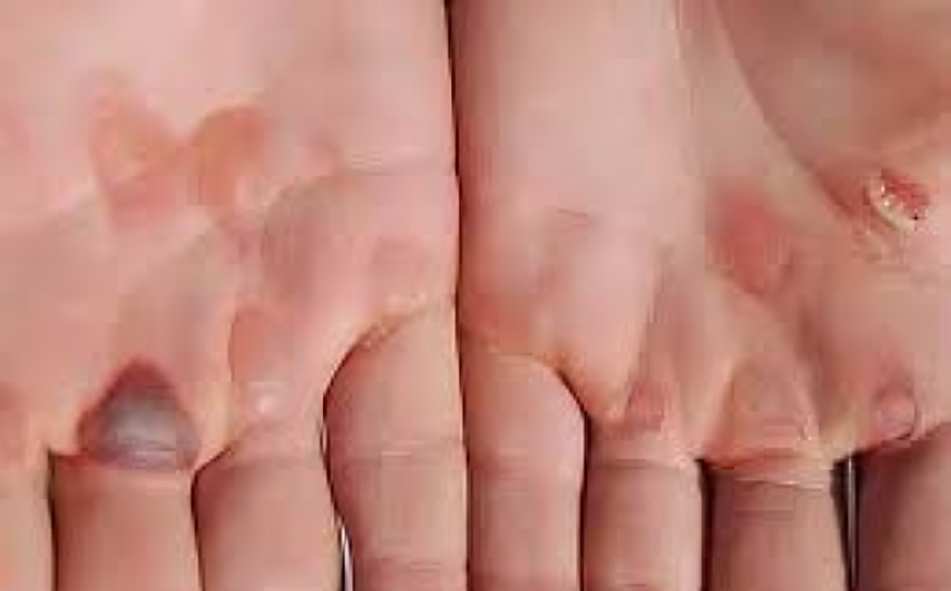The finger tape technique has been adopted by cricketers worldwide to avoid this issue. It allows the finger to remain flexible while providing support. In this article, I’ll discuss the reasons for players to tape their fingers and its benefits. Let’s get started.
Reasons for the players to Cricketers tape their finger in cricket

To protect the fingers from injury while playing Cricketers often tape their fingers as a form of protective measure against injury while playing. Taping the fingers is an effective way of preventing jammed or dislocated fingers, as well as fractures.
In addition to offering cushioning support, the tape also helps to reduce the pressure on the fingers by providing additional grip while holding the bat or catching the ball. By taping their fingers before playing, cricketers can protect themselves from any potential injuries, reducing down time and enabling them to stay on the pitch and continue their performance at optimal levels.
To help the cricketers Tape grip the ball better
Effective grip is essential for spinners and fast bowlers to maximize the seam movement and rotation of the ball. Most cricketers use tape to wrap their fingers tightly and secure them in place for better support and grip during matches.
The tape provides added support to the fingers, enabling cricketers to bowl long spells without feeling fatigued. Overall, taping the fingers is a common practice among cricketers to enhance their ball control and prevent any injuries during matches. However, it is not allowed for the bowlers to tape the finger during bowling. Therefore, they need to unwrap the tape during their bowling.
To reduce the strain on the fingers during long innings
One reason why cricketers tape their fingers is to reduce the strain on their fingers during long innings. As batting requires a significant amount of grip strength and endurance, the repetitive motion of gripping the bat can cause excessive pressure on the fingers, including the ligaments and tendons.
The constant jarring impact of the ball hitting the bat can also lead to swelling and inflammation of the fingers. Taping the fingers helps to provide additional support to the joints and muscles, reducing the risk of injury and improving the player’s grip on the bat. This technique can help cricketers maintain their performance and prevent long-term damage to their fingers.
To prevent blisters and calluses from forming

Cricketers often tape their fingers for various reasons, one of which is to prevent blisters and calluses from forming on their fingers. Batting and bowling in cricket require a significant amount of grip and physical exertion, leading to friction and pressure on the fingers. This repeated friction on the fingers can lead to the formation of painful blisters and calluses, which can affect a player’s performance on the field.
Taping the fingers can reduce the friction and pressure on the fingers, evenly distributing the forces and minimizing the risk of blisters and calluses. Additionally, taping can offer additional support and cushioning to the fingers, reducing the impact caused by the ball when a player is batting or catching. Cricketers, especially those who frequently engage in long matches, understand the importance of taping their fingers to maintain their grip and avoid discomfort or injury.
How to tape your finger in cricketer Tape

Below are steps you should follow to Cricketers tape your fingers:
- Choose the right tape: Use a high-quality adhesive tape that is strong, comfortable, and does not easily come off during the game.
- Start with the base: Begin by wrapping the tape around the base of your finger, just above the knuckle. Make sure to wrap it tightly but not too tight that it cuts off circulation.
- Wrap diagonally: Continue wrapping the tape diagonally around the finger, covering the base of the finger with each wrap. This will create a strong and secure base for your finger.
- Wrap around the joint: Next, wrap the tape around the joint of the finger, covering it completely. This will provide extra support to the finger joint.
- Finish with a layer: Finally, finish wrapping the tape around the top of the finger, covering it completely. Make sure to wrap it tightly but not too tight
